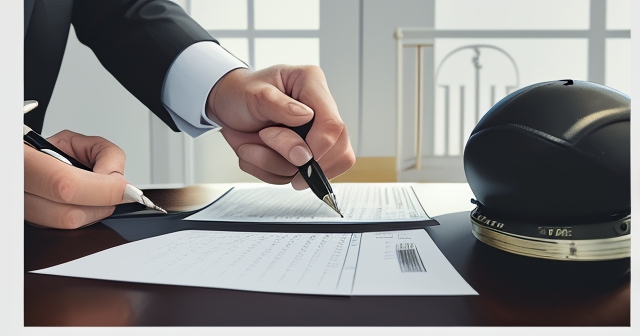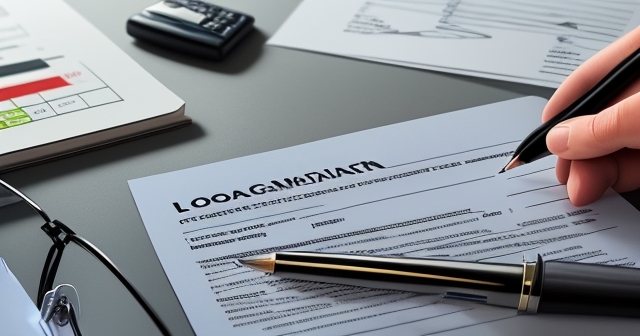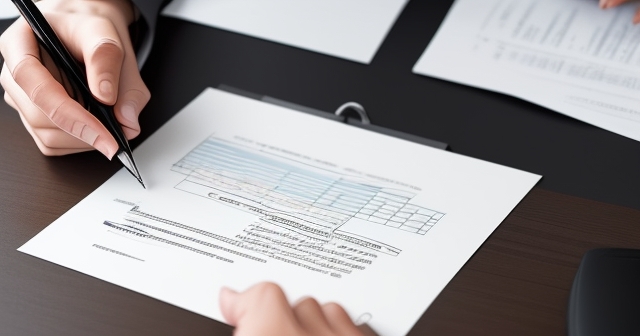
Something Pledged as Security for Repayment of a Loan: Understanding Collateral in Secured Lending
Table of Contents
ToggleUnderstanding Collateral: The Essential Foundation of Secured Lending
Welcome to our exploration of one of the most fundamental concepts in finance: collateral. If you are new to investing, borrowing, or simply navigating the financial world, understanding collateral is absolutely critical. It’s the bedrock upon which much of the lending landscape is built, providing a safety net that makes significant financial transactions possible for both individuals and businesses.
Think of collateral as a promise backed by something tangible or valuable. When you borrow money, especially large sums, lenders face risk. What if you can’t repay the loan? Collateral is the asset you pledge to the lender as security. It’s something they can claim and sell if you default on your repayment obligations. This mechanism significantly reduces the lender’s risk, which in turn influences whether you can get the loan and what terms (like the interest rate) you’ll receive.
In this guide, we will dissect the concept of collateral, examining its purpose, how it functions in various lending scenarios, the diverse types of assets that can serve as security, and the critical evaluation processes lenders employ. We will also touch upon the risks involved for you, the borrower. Our goal is to provide you with a comprehensive, expert-level understanding, presented in a way that builds confidence and clarity, like a trusted advisor walking you through complex terrain.

What Exactly is Collateral and Why Does it Matter So Much?
At its core, collateral is an asset that a borrower pledges to a lender as security for a loan. This pledged asset serves as a guarantee that the borrower will repay the debt. If the borrower fails to make the agreed-upon payments – a state known as default – the lender has the legal right to seize and sell the collateral to recover the outstanding balance of the loan.
Why is this mechanism so essential? For lenders, it transforms a potentially high-risk transaction into a manageable one. Without collateral, extending large loans would be far riskier, limiting the availability of credit for major purchases like homes, cars, or business equipment. Collateral provides a tangible or verifiable source of repayment beyond just the borrower’s promise or income stream. It’s a physical or financial buffer against loss.
For you, the borrower, collateral is often the key that unlocks access to financing. Loans backed by collateral are called secured loans. Because the lender’s risk is lower, secured loans typically come with more favorable terms than unsecured loans (like credit cards or personal loans issued based solely on creditworthiness). These better terms often include lower interest rates, larger loan amounts, and longer repayment periods.
Consider the purchase of a house. The house itself is almost always the collateral for the mortgage loan. If the homeowner stops paying the mortgage, the lender can initiate foreclosure proceedings, take possession of the house, and sell it to recoup the loan amount. This security is why mortgage loans are possible on such a massive scale.
This fundamental principle of using an asset as security for a debt has underpinned financial systems for centuries and remains a cornerstone of modern lending practices globally.

How the Collateral Mechanism Works: From Pledge to Potential Problem
Let’s walk through the lifecycle of a secured loan to fully grasp how collateral operates in practice. The process begins when you, the borrower, apply for a loan and offer a specific asset as collateral.
The lender will first evaluate your creditworthiness (your history of repaying debts) and your capacity to repay the loan from your income. However, for a secured loan, they place significant weight on the value and suitability of the proposed collateral. They need to be confident that the asset is valuable enough and that they can legally claim it if necessary.
Upon approval of the loan, a legal agreement is executed. This agreement includes details about the loan terms, repayment schedule, and the specific asset being pledged as collateral. Crucially, the lender obtains a legal claim on the collateral, often referred to as a lien. A lien is a right to keep possession of property belonging to another person until a debt owed by that person is discharged. For real estate, the lien is recorded with the local government (e.g., county recorder’s office), making it public record and ensuring the lender’s priority claim over other potential creditors.
During the life of the loan, you retain possession and use of the collateral (unless the loan agreement states otherwise, which is rare for common assets like homes or cars). You continue to make scheduled principal and interest payments.
The critical point arrives if you fail to make payments as agreed, leading to a default. Once a borrower is in default (the specific conditions for default are outlined in the loan agreement), the lender has the right to exercise their claim on the collateral. The exact process varies depending on the type of collateral and jurisdiction, but it generally involves the lender taking legal steps to repossess or gain control of the asset.
For a car loan, this might mean the lender arranges for the vehicle to be towed away. For real estate, it involves the more complex legal process of foreclosure. Once the lender has possession, they will typically sell the asset – usually through an auction or a standard sale process – to recover the outstanding loan amount, including any accumulated interest, fees, and the costs of the repossession/foreclosure and sale.
If the sale price of the collateral is less than the amount owed, the borrower may still be liable for the difference, known as a deficiency balance. Conversely, if the sale price exceeds the amount owed, the surplus (after covering costs) is usually returned to the borrower, though this is less common, especially after factoring in all associated fees.
Understanding this process is vital. While collateral enables access to credit, it also represents a significant risk: the potential loss of your valuable asset if you cannot meet your financial obligations.

A Diverse World of Security: Exploring Types of Collateral Assets
What kinds of assets can be used as collateral? The answer is broad and depends heavily on the type of loan and the lender’s policies. Lenders look for assets that are relatively stable in value, easily identifiable, and, most importantly, possess a clear market value and are legally claimable and sellable.
Let’s delve into some common categories:
-
Real Estate: This is perhaps the most common type of collateral, forming the basis of mortgage loans for residential properties and commercial mortgages for business properties. Land and buildings tend to hold significant, relatively stable value, making them ideal security. Lenders perform extensive appraisals and title searches to verify value and ownership.
-
Vehicles: Cars, trucks, motorcycles, boats, and even airplanes can serve as collateral for loans. Auto loans, for example, use the purchased vehicle as security. Like real estate, vehicles have a clear market value (though they depreciate) and are easily identifiable via vehicle identification numbers (VINs).
-
Cash and Cash Equivalents: Pledging cash in a savings account or a certificate of deposit (CD) is one of the safest forms of collateral for a lender. This is common for secured credit cards or loans where the borrower might have poor credit but sufficient cash reserves. The value is certain, and the lender can easily access the funds in case of default.
-
Investment Securities: Stocks, bonds, and mutual funds held in a brokerage account can be used as collateral for loans, often through services like margin loans from a brokerage firm or specific portfolio loans from banks. The value fluctuates with market conditions, so lenders typically only lend a percentage of the portfolio’s value (applying a significant “discount” or “haircut”).
-
Business Assets: For businesses, a wide range of assets can be pledged. This is the basis of asset-based finance. Examples include:
- Accounts Receivable: Money owed to the business by its customers. The lender evaluates the quality and reliability of these receivables.
- Inventory: The raw materials, work-in-progress, and finished goods a business holds. Valuing and selling inventory can be complex, so lenders often lend a lower percentage of its book value.
- Equipment: Machinery, vehicles, computers, and other tangible assets essential to the business’s operations. Like inventory, valuation and sale can be tricky.
- Real Estate & Buildings: Business-owned property.
-
Personal Property: In some cases, valuable personal property like art, jewelry, or collectibles can be used, although this is less common for standard loans and requires specialized appraisal and storage.
-
Insurance Policies: The cash value of certain life insurance policies (like whole life or universal life) can be borrowed against. The policy itself serves as collateral.
-
Intellectual Property: In rare cases, valuable patents, copyrights, or trademarks might be used, but valuing and enforcing claims on such intangible assets is highly complex and usually reserved for specialized finance.
The type of collateral accepted fundamentally depends on the lender’s comfort level with its stability, marketability, and ease of legal claim. As you can see, the landscape of potential collateral is vast, extending far beyond just physical property.

The Lender’s Lens: Evaluating Collateral and Managing Risk
From a lender’s perspective, not all assets are created equal when it comes to serving as security. A rigorous evaluation process is undertaken to determine if the collateral is acceptable and how much can be lent against it. This process is a critical part of underwriting the loan.
The primary concerns for a lender regarding collateral are:
-
Value: What is the current market value of the asset? Is this value stable or highly volatile? Lenders rely on appraisals (for real estate), market data (for securities or vehicles), or inventory/receivable aging reports (for business assets) to estimate value.
-
Marketability: How easily and quickly can the asset be sold if the borrower defaults? Highly liquid assets like cash or publicly traded stocks are easily marketable. Specialized equipment or unique art pieces are much less so.
-
Condition & Durability: Is the asset well-maintained? Will it significantly depreciate over the loan term? For physical assets, condition is paramount.
-
Clear Ownership & Legal Standing: Does the borrower truly own the asset free and clear of other claims? The lender will conduct title searches (for real estate/vehicles) or Uniform Commercial Code (UCC) filings searches (for business assets) to ensure their lien will have priority.
-
Risk of Loss or Damage: Is the asset susceptible to natural disasters, theft, or rapid obsolescence? Lenders often require insurance on pledged assets (like homeowner’s insurance or auto insurance) to protect their interest.
Lenders rarely lend 100% of the estimated value of the collateral. Instead, they apply a “discount” or “haircut” to the asset’s value. This discount accounts for potential declines in value, the costs associated with seizing and selling the asset, and the risk that the eventual sale price might be lower than the current market estimate. The amount lent relative to the collateral’s value is expressed as the Loan-to-Value (LTV) ratio.
For example, a mortgage lender might offer an LTV of 80% on a primary residence. This means if the house is appraised at $300,000, the maximum loan amount is $240,000 ($300,000 * 0.80). The 20% difference ($60,000) represents the equity buffer that protects the lender if housing prices decline.
For more volatile assets like stocks or accounts receivable, the LTV will be much lower – perhaps 50% or even less. This reflects the higher risk and potential for value fluctuations or uncollectible debts.
While collateral is key, lenders also critically assess your capacity to repay the loan from your cash flow. A common metric for businesses is the Debt Service Coverage Ratio (DSCR), which compares a company’s net operating income to its total debt service requirements. A strong DSCR indicates the business generates enough cash to comfortably make loan payments, reducing the likelihood that the lender will ever need to rely on the collateral.
The combination of a strong LTV (sufficient collateral buffer) and a healthy DSCR (strong repayment capacity) presents the lowest risk scenario for a lender, often resulting in the most favorable loan terms for the borrower.

Collateral in Specific Lending Contexts: Beyond the Basics
While the core concept of collateral remains consistent, its application and specific considerations vary significantly across different types of lending. Understanding these nuances is key.
Mortgage Lending: As discussed, the financed property is the collateral. The LTV ratio is a dominant factor, influencing not only the loan amount but often the interest rate and the requirement for Private Mortgage Insurance (PMI) if the LTV is high (e.g., above 80%). Second mortgages or home equity lines of credit (HELOCs) also use the home’s equity as collateral, but the first mortgage lender has the primary claim in case of default.
Auto Loans: The purchased vehicle secures the loan. The lender holds the title until the loan is paid off. Because cars depreciate over time, the loan term is usually shorter than for mortgages to ensure the outstanding loan balance doesn’t exceed the car’s value significantly during the loan’s life. Lenders also require collision and comprehensive insurance to protect the collateral.
Business Lending: Collateral is a crucial element, often alongside the business’s cash flow and the owner’s personal creditworthiness. Lenders assessing a business loan typically look at the “3 C’s of Credit”:
- Character: The borrower’s credit history and reputation.
- Capacity: The business’s ability to generate enough cash flow to repay the loan (often measured by DSCR).
- Collateral: Assets available to secure the loan (accounts receivable, inventory, equipment, real estate).
Often, for small to medium-sized business loans, lenders require a Personal Guarantee (PG) from the business owner. This means the owner pledges their personal assets (like their home or savings) as additional collateral. If the business defaults, the lender can pursue the owner’s personal assets, bypassing the limited liability structure of the business. This significantly increases the owner’s personal risk but is often necessary to obtain business financing.
Secured Personal Loans: While less common than unsecured personal loans, these exist and might be secured by assets like a savings account, CD, or even a paid-off car. They can be an option for individuals with poor credit who need funds but have suitable assets to pledge.
Secured Credit Cards: These are designed for individuals with poor or no credit history. You provide a cash deposit (the collateral), and your credit limit is typically set equal to this deposit amount. If you fail to pay your bill, the issuer can use your deposit to cover the debt. This allows individuals to build credit responsibly.
Collateral in Trading and Investment: Margin Accounts
Collateral also plays a significant role in the world of trading, particularly in margin accounts. When you trade on margin, you are borrowing money from your brokerage firm to buy securities. The securities you purchase, as well as any other eligible assets in your brokerage account, serve as collateral for that loan.
Trading on margin can magnify potential gains, but it also significantly increases risk. Brokerage firms have rules about the minimum amount of equity (your money vs. borrowed money) you must maintain in your account, known as the maintenance margin requirement. The securities in your account are constantly being revalued based on market prices.
If the value of the securities in your account falls below the maintenance margin requirement, the brokerage firm will issue a margin call. This is a demand for you to deposit additional funds or securities to bring your account equity back up to the required level. If you fail to meet a margin call quickly, the brokerage has the right to sell the securities held as collateral in your account, often at unfavorable prices, to recover the amount you borrowed. This can lead to substantial losses, potentially exceeding your initial investment.
Understanding the collateral implications of margin trading is crucial for anyone using leverage. The assets in your account are not just investments; they are security for the loan you’ve taken out.
If you’re exploring trading with leverage or looking for a platform that offers a wide range of instruments including forex, consider the infrastructure and regulatory compliance of potential brokers. In choosing a trading platform, the flexibility and technological advantages are worth noting. It supports mainstream platforms like MT4, MT5, Pro Trader, combining high-speed execution with low spreads for a good trading experience.
Historical Context and Evolution: Collateral Through the Ages
The concept of pledging something of value as security for a debt is by no means new; it has roots stretching back to ancient civilizations. Early forms involved pledging land, livestock, or even personal freedom (though this evolved away from debt slavery). The evolution of collateral mirrors the development of economies and legal systems.
As commerce grew, tangible assets like goods and ships became common collateral for trade finance. The development of formal legal systems provided the framework for establishing and enforcing liens, making secured lending more reliable and scalable.
The rise of industrialization brought equipment and machinery into prominence as collateral. The growth of financial markets added stocks and bonds to the list of acceptable security. The 20th and 21st centuries have seen the collateral landscape continue to broaden, incorporating more intangible assets and adapting to new technologies.
For instance, the formalization of asset-based lending in the mid-20th century allowed businesses to more effectively leverage assets like accounts receivable and inventory. More recently, we’ve seen discussions and limited use of novel forms of collateral, such as digital assets.
Cryptocurrency is a contemporary example of an asset class being explored for collateralization, particularly in decentralized finance (DeFi) platforms. Borrowers can lock up cryptocurrencies as collateral to borrow other cryptocurrencies or stablecoins. However, due to the extreme volatility of many cryptocurrencies, lenders often require very high collateralization ratios (e.g., pledging $150-$200 worth of crypto to borrow $100), and the risk of liquidation if the collateral value drops remains significant.
The history of collateral demonstrates a continuous adaptation to new forms of wealth and economic activity, always centered on the fundamental principle of providing a reliable fallback for lenders.
Borrower Considerations and Risks: The Other Side of the Coin
While collateral provides access to credit and potentially better terms, it is crucial for you, the borrower, to fully understand the risks involved. Pledging an asset is not a formality; it creates a direct vulnerability if your financial situation deteriorates.
-
Risk of Losing the Asset: This is the most significant risk. If you cannot repay the loan, you will likely lose the pledged asset, whether it’s your home, car, business equipment, or investment portfolio. This loss can have devastating financial and personal consequences.
-
Deficiency Judgments: As mentioned earlier, if the sale of the collateral does not cover the full amount owed (including fees and interest), the lender may pursue a deficiency judgment against you for the remaining balance. This means you could lose the asset *and* still owe money.
-
Impact on Credit Score: Defaulting on a secured loan and losing collateral will severely damage your credit score, making it difficult and expensive to obtain credit in the future.
-
Restrictions on Asset Use: While you typically retain use of the collateral, the loan agreement may impose restrictions, such as requirements for insurance, maintenance, or limitations on selling or further encumbering the asset without the lender’s consent.
-
Potential for Onerous Terms (in distressed situations): If you are seeking a secured loan because you have poor credit, the terms offered might still be less favorable (higher interest rates, lower LTV) despite providing collateral, reflecting the lender’s assessment of your overall repayment risk.
Before taking out a secured loan, it is paramount to honestly assess your ability to repay the debt under various scenarios. Consider potential job loss, unexpected expenses, or changes in market conditions that might affect your income or the value of your collateral. Have a realistic repayment plan and a buffer for emergencies.
Carefully review the loan agreement, paying close attention to the definition of default, the lender’s rights regarding the collateral, and the process for handling default and potential sale of the asset. Don’t hesitate to ask the lender to clarify any terms you don’t understand.
Secured vs. Unsecured Loans: Understanding the Difference
To further solidify your understanding, let’s explicitly compare secured and unsecured loans, highlighting how collateral is the key differentiator.
-
Secured Loans: These loans require the borrower to pledge a specific asset as collateral. Examples include mortgages, auto loans, secured personal loans, secured credit cards, and most business loans financing specific assets.
- Lender’s Perspective: Lower risk due to the safety net of collateral.
- Borrower’s Perspective: Easier access to larger sums and potentially lower interest rates and better terms. Higher risk of losing a specific asset upon default.
-
Unsecured Loans: These loans are issued solely based on the borrower’s creditworthiness, income, and promise to repay. No specific asset is pledged as security. Examples include most personal loans, student loans, and traditional credit cards.
- Lender’s Perspective: Higher risk, as there is no specific asset to seize if the borrower defaults. Recovery relies on pursuing the borrower’s general assets through legal means, which can be complex and time-consuming.
- Borrower’s Perspective: Does not require pledging an asset, removing the risk of losing a specific piece of property. However, interest rates are typically higher to compensate the lender for the increased risk. Loan amounts may be smaller, and eligibility is more strictly tied to credit score and income. Default still results in severe credit damage and potential legal action to seize general assets (like wages or bank accounts), but not a pre-agreed specific asset.
Choosing between a secured and unsecured loan depends on your needs, credit profile, and willingness to put an asset at risk. Secured loans facilitate large, long-term financing for specific assets, while unsecured loans offer flexibility for personal expenses or smaller needs without tying them to a particular piece of property, albeit at a potentially higher cost.
Navigating Secured Lending: A Prudent Borrower’s Approach
If you are considering a secured loan, approaching the process prudently is essential. Here are some steps you can take to ensure you are making an informed decision:
-
Assess Your Repayment Capacity Realistically: Go beyond just looking at your current income. Create a detailed budget that accounts for all expenses and potential changes in your financial situation. Use online calculators to see how the monthly payments fit into your budget.
-
Understand the Collateral’s Value and Risks: Get an independent appraisal or valuation of the asset you plan to pledge. Research its marketability. Understand how its value might fluctuate over time (e.g., depreciation for a car, market volatility for stocks, housing market trends for real estate).
-
Shop Around for Lenders and Terms: Don’t take the first offer. Different lenders will have different LTV requirements, interest rates, fees, and terms regarding collateral. Compare offers carefully.
-
Read the Loan Agreement Meticulously: Pay attention to the default clauses, late fees, the lender’s rights regarding the collateral, and any clauses about acceleration (where the full loan balance becomes due immediately upon default). Understand the foreclosure or repossession process outlined in the agreement.
-
Ensure Proper Insurance: Make sure the pledged asset is adequately insured against damage, loss, or other risks as required by the loan agreement. This protects both your interest and the lender’s.
-
Maintain Communication with Your Lender: If you anticipate having trouble making payments, contact your lender as soon as possible. They may be willing to work with you to find a solution before you fall into formal default and risk losing your collateral.
By taking these steps, you empower yourself as a borrower, mitigating the risks associated with pledging valuable assets and increasing your likelihood of a successful borrowing experience.
Conclusion: Collateral as a Cornerstone of Finance
Collateral is far more than just a financial term; it is a fundamental mechanism that facilitates economic activity by managing risk in lending. For lenders, it provides the security needed to extend credit for significant purchases and investments. For borrowers, it is often the key to accessing necessary funds, frequently at more favorable terms than would otherwise be available.
However, the power of collateral comes with significant responsibility and risk for the borrower. Pledging an asset means putting it directly on the line. Default carries the very real consequence of losing that asset through processes like repossession or foreclosure.
A deep understanding of what collateral is, how it works, how lenders evaluate it, and the risks involved is essential for anyone participating in the financial system, whether you are taking out a mortgage, financing a car, securing a business loan, or trading on margin.
By approaching secured lending with knowledge, prudence, and a clear plan for repayment, you can leverage the power of collateral to achieve your financial goals while minimizing the potential downsides. Remember, knowledge is your greatest asset in navigating the complexities of finance.
something pledged as security for repayment of a loanFAQ
Q:What happens if I default on a secured loan?
A:If you default, the lender can seize the collateral and sell it to recover the outstanding debt.
Q:Can I still use the asset while I have a secured loan?
A:Typically, yes, but restrictions may apply depending on the loan agreement.
Q:What types of assets can be used as collateral?
A:Common collateral includes real estate, vehicles, cash, and investment securities.
| Type of Loan | Collateral Type | Borrower’s Benefits |
|---|---|---|
| Mortgage | House | Lower interest rates, long repayment periods |
| Auto Loan | Vehicle | Lower monthly payments |
| Personal Loan | Cash, CD | Easier approval for those with poor credit |
You may also like
Calendar
| 一 | 二 | 三 | 四 | 五 | 六 | 日 |
|---|---|---|---|---|---|---|
| 1 | 2 | 3 | 4 | 5 | 6 | 7 |
| 8 | 9 | 10 | 11 | 12 | 13 | 14 |
| 15 | 16 | 17 | 18 | 19 | 20 | 21 |
| 22 | 23 | 24 | 25 | 26 | 27 | 28 |
| 29 | 30 | 31 | ||||
發佈留言
很抱歉,必須登入網站才能發佈留言。